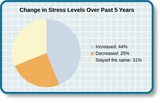
By the end of this section, you will be able to:Understand the physiological basis of stress and describe the general adaptation syndrome
- Subject:
- Psychology
- Social Science
- Material Type:
- Reading
- Author:
- Natalie Sherrell
- Date Added:
- 07/15/2020

By the end of this section, you will be able to:Understand the physiological basis of stress and describe the general adaptation syndrome

Psychology is designed to meet scope and sequence requirements for the single-semester introduction to psychology course. The book offers a comprehensive treatment of core concepts, grounded in both classic studies and current and emerging research. The text also includes coverage of the DSM-5 in examinations of psychological disorders. Psychology incorporates discussions that reflect the diversity within the discipline, as well as the diversity of cultures and communities across the globe.Senior Contributing AuthorsRose M. Spielman, Formerly of Quinnipiac UniversityContributing AuthorsKathryn Dumper, Bainbridge State CollegeWilliam Jenkins, Mercer UniversityArlene Lacombe, Saint Joseph's UniversityMarilyn Lovett, Livingstone CollegeMarion Perlmutter, University of Michigan



By the end of this section, you will be able to:Differentiate between stimulus-based and response-based definitions of stressDefine stress as a processDifferentiate between good stress and bad stressDescribe the early contributions of Walter Cannon and Hans Selye to the stress research fieldUnderstand the physiological basis of stress and describe the general adaptation syndrome

This resource is a video abstract of a research paper created by Research Square on behalf of its authors. It provides a synopsis that's easy to understand, and can be used to introduce the topics it covers to students, researchers, and the general public. The video's transcript is also provided in full, with a portion provided below for preview:
"Peptide hormones are important signaling molecules within the body. One such peptide is the secreted protein augurin, which is encoded by the gene Ecrg4, whose expression has been reported in a wide range of human tissues. The product of the gene Ecrg4, the augurin precursor ECRG4, has been predicted to be cleaved to originate different peptides. Augurin is implicated in a variety of processes, including tumorigenesis, inflammation, and infection. It is also involved in the regulation of the hypothalamo-pituitary adrenal axis and in osteoblast differentiation. Augurin is implicated in the modulation of well-known signaling cascades, including NF-kB, PI3K/Akt/mTor, Wnt-beta catenin, and apoptosis pathways, however, the molecular mechanisms underlying its action remain largely unexplored. Given its involvement in health and disease, augurin is an attractive target for the discovery of new therapeutic agents for human pathologies..."
The rest of the transcript, along with a link to the research itself, is available on the resource itself.